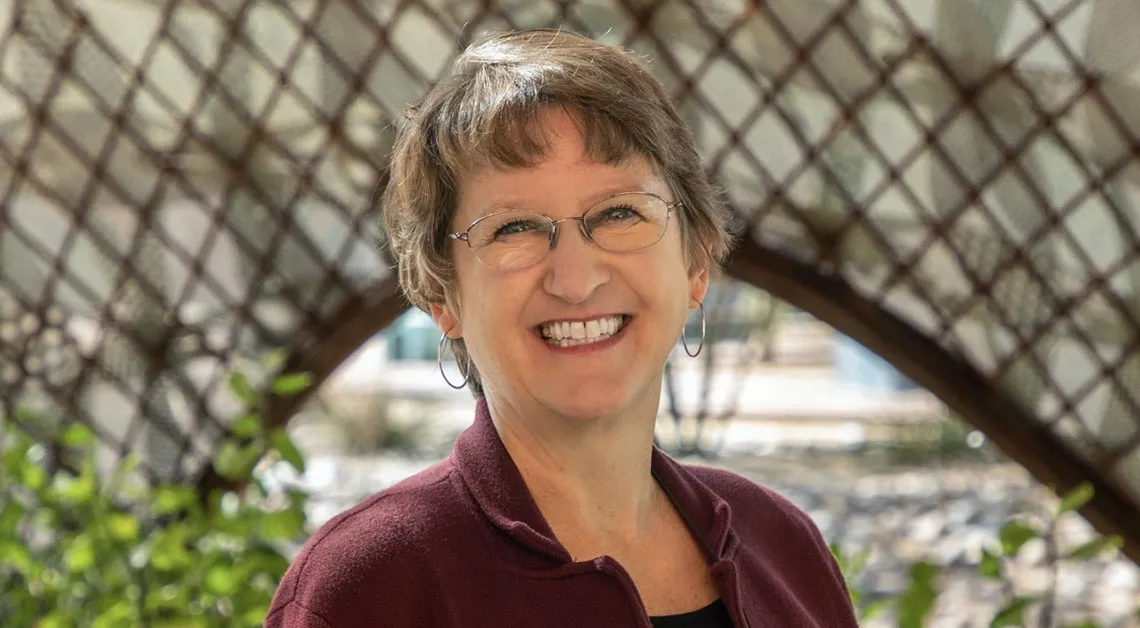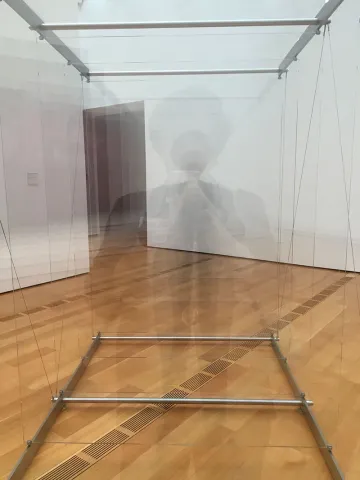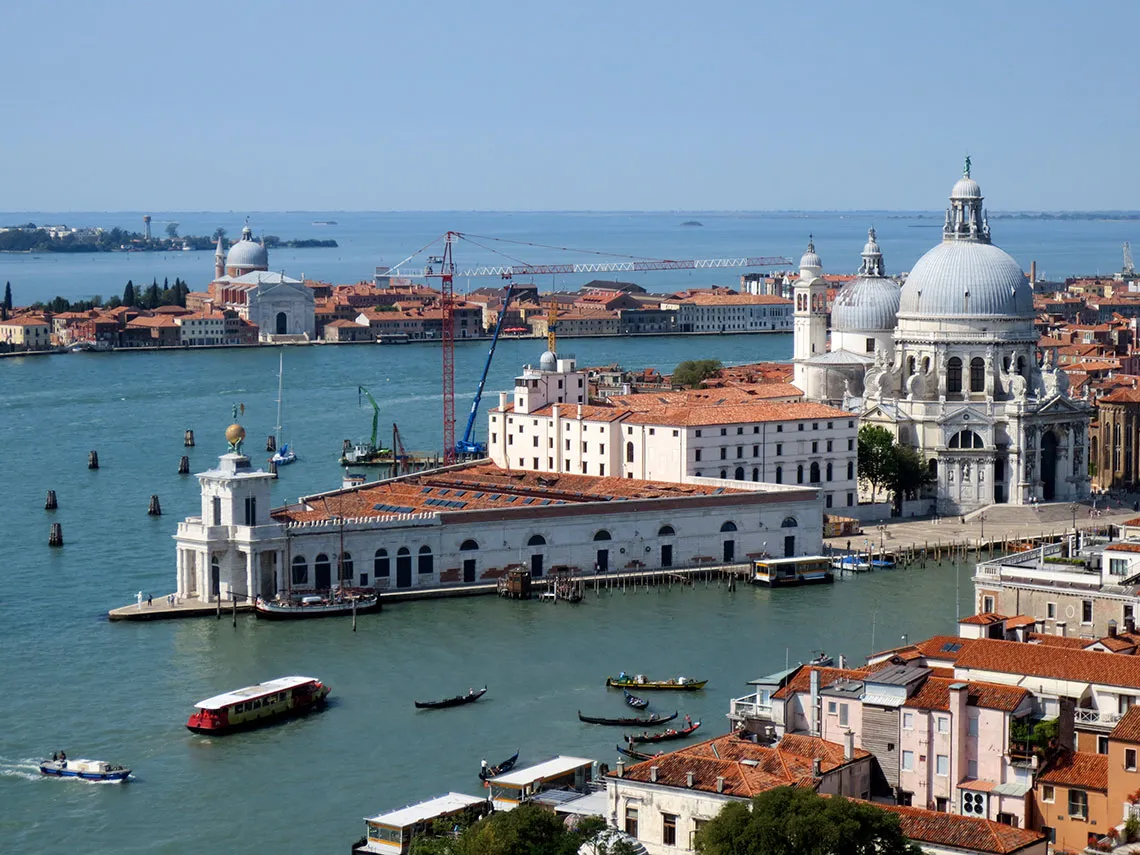Dwelling in Meaning: Laura Hollengreen, Associate Dean for Academic Affairs and Associate Professor of Architecture

Eight Questions with Dr. Laura Hollengreen, Associate Dean for Academic Affairs and Associate Professor of Architecture
“We are creatures of meaning—we dwell in meaning—and so the formulation of ideas in communication with oneself and others is critical and thrilling.”
Join Laura Hollengreen for her Fall 2021 Humanities Seminars Program class, The Long Reach of Roman Architecture before the Renaissance.
What brought you to CAPLA... twice?
I moved to Tucson in 1991 with my husband, then a new assistant professor of mathematics, and I began teaching at CAPLA in fall 1995 while I was still working on my PhD in History of Art at UC Berkeley. I taught for several years here as an adjunct, both in the School of Architecture and the School of Art, which was a great way to gain experience while not feeling I was under the microscope. I was then hired in a tenure-track position in fall 2000.
Two distinct parts of my career have played out at CAPLA. The first lasted until 2009, when my husband and I took jobs at Georgia Tech and moved to Atlanta. We returned to UArizona in 2017, both of us in administrative positions. Initially, I served as the associate director of the School of Architecture; now I also serve as associate dean for academic affairs.

Windows in the piano nobile, Palazzo Davanzati, Florence. Photo by Laura Hollengreen.
Tell us about your current research and upcoming Humanities Seminars Program lectures.
My current research is centered on theories of virtual and augmented reality, as I try to understand how some effects of digital media today were foreshadowed by immersive techniques in art and architecture of the past, especially medieval art which is my area of expertise. I am collaborating on the project with a digital media colleague, Rebecca Rouse, whom I got to know when she took an independent study with me on museum design and environments of display during her doctoral study at Georgia Tech. We have submitted work to several journals and scholarly anthologies.
I am also currently planning a series of four lectures for a College of Fine Arts Humanities Seminars Program course, scheduled to take place in Spring 2021, entitled Localizing the Sacred: Medieval Christian Architecture and Art. The four sites I’ve chosen to present (an Early Christian one in Syria, a Byzantine one in Istanbul, and Romanesque and Gothic sites in France) are all rich in the material and artistic culture of medieval religious practice, as well as in architectural innovation. I’ve always been interested in the issue of how how religious belief and practice, and the works of art and architecture associated with them, provide an arena in which people try to explain to themselves the world around them.

Self-portrait in Gerhard Richter’s 7 Panes, High Museum of Art, Atlanta. Photo by Laura Hollengreen.
What is your current service work, and what most excites you about this work?
Most of my service work has to do with academic administration—the decisions and policies that govern faculty, students and curricula. It excites me to be part of discussions about how to help colleagues and students realize their best, most creative, most informed, most articulate selves in service to the larger world.
In addition, a certain amount of what I do ends up being conflict resolution or mediation of various sorts. I got good practice at this during several years as assistant provost for academic advocacy and conflict resolution at Georgia Tech. In many ways, I’m a by-the-book kind of person; at the same time, I know that individual instances of conflict sometimes require the discernment to fashion unusual solutions. And when I see patterns of problems, I am able to propose new, improved policies and procedures.
What is your current practice and how does this work play into your teaching?
My “practice” is a linguistic one, so it may or may not be understood as “making” in the way my colleagues use the word. However, I believe we are creatures of meaning—we dwell in meaning—and so the formulation of ideas in communication with oneself and others is critical and thrilling.
A sharp, precise, vivid speaker or writer always gets my attention. I love the rhetorical flair and also the sheer inventiveness of such a person. In teaching, I want my students to feel that they can fashion statements, arguments, explanations and designs that are theirs—in their voices. My role is to advise them about how to do that in an informed and compelling way.
What are you currently teaching, and what do you most enjoy about teaching?
Because of my current administrative appointments, I am not teaching every semester. However, in recent years I have taught ARC 231/531, the first history and theory course in the School of Architecture and ARC 435, a hinge course for B.Arch students (and an elective for grads) as they contemplate aligning their final semesters of study with certain specific issues and opportunities in the profession. I have also taught an advanced elective, How Do We Dwell?, which began life as a B.Arch elective entitled Urban Public Space but has morphed in content over the years. I also now have the pleasure of chairing one of the new P[hase] 3 clusters in the B.Arch: (Meta)Physics of Light. In connection with that, I’ll be teaching a new elective, ARC 471A/571A Light in Modern and Contemporary Art and Architecture, next fall. I’ve been wanting to expose our students to more art history for quite a while!
I also continue to advise two PhD students in architectural history at Georgia Tech, one working on the afterlife of Roman amphitheaters in cities in Italy and the other on a 20th century Romanian architect who lived and worked in France, Romania and Israel. I suppose it’s hard to find two topics more different and yet I have always relished the latitude I have in architecture to engage in diverse topics and arenas.

Tadao Ando, Punta della Dogana Museum, Venice. Photo by Laura Hollengreen.
Tell us a bit more about your approach to teaching.
For me, teaching is about helping a student build confidence to grapple with (and formulate!) new ideas, to understand what constitutes ambition and credibility in a field of study, and know how to speak, write and design with authority. My own experience growing from a shy kid into someone able to teach big classes and command attention and desire to learn is something that informs interactions with students every day.
Beyond your work at CAPLA, what are your passions?
I love to travel, eat good food and experience art and architecture in person, all things that are hard to do right now. I am cooking more, though, and trying lots of new recipes. And before the pandemic hit, in summer 2019, I got to see one of the sites on my bucket list: Hadrian’s Wall in northern England. I also spent some time in Scotland and would like to explore more of that place, both because of its wonderful prehistoric/ancient/medieval/early modern heritage and because of my own personal heritage as an offshoot of the MacGillivray clan.

Temple of Hera and Temple of Apollo (?), Paestum, Italy. Photo by Laura Hollengreen.
What does the CAPLA experience mean for you?
CAPLA has been a place of tremendous growth for me over the years—intellectually, professionally and socially. That’s why I’m so fond of the place and its people. It keeps me engaged and ever striving for new ideas. That’s what gets me up in the morning!



